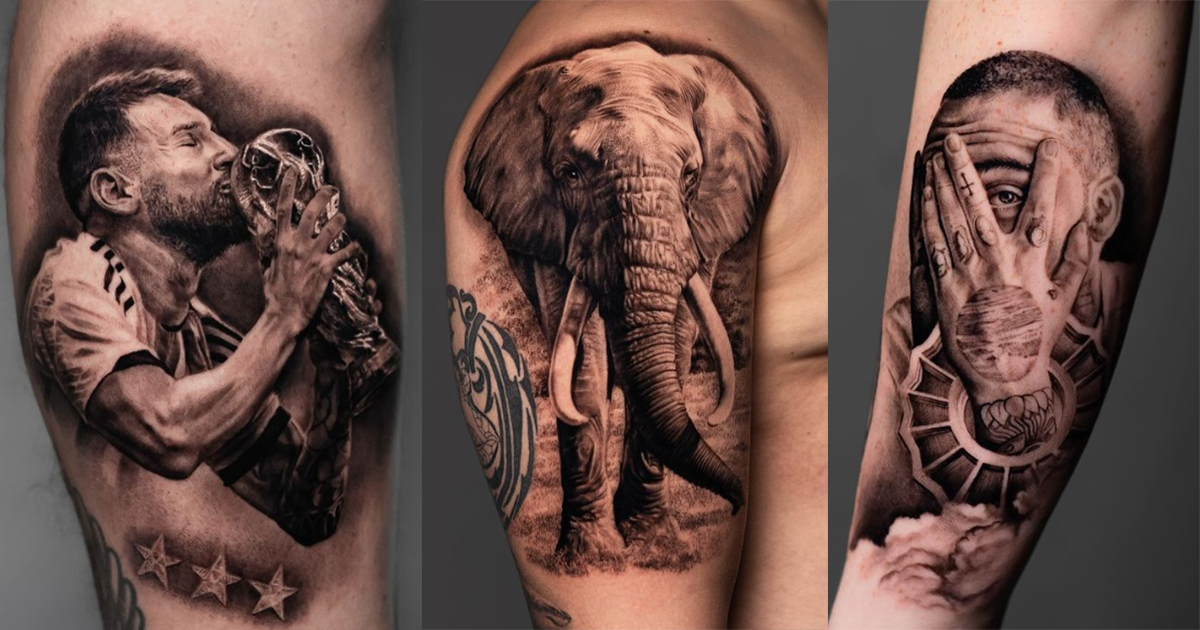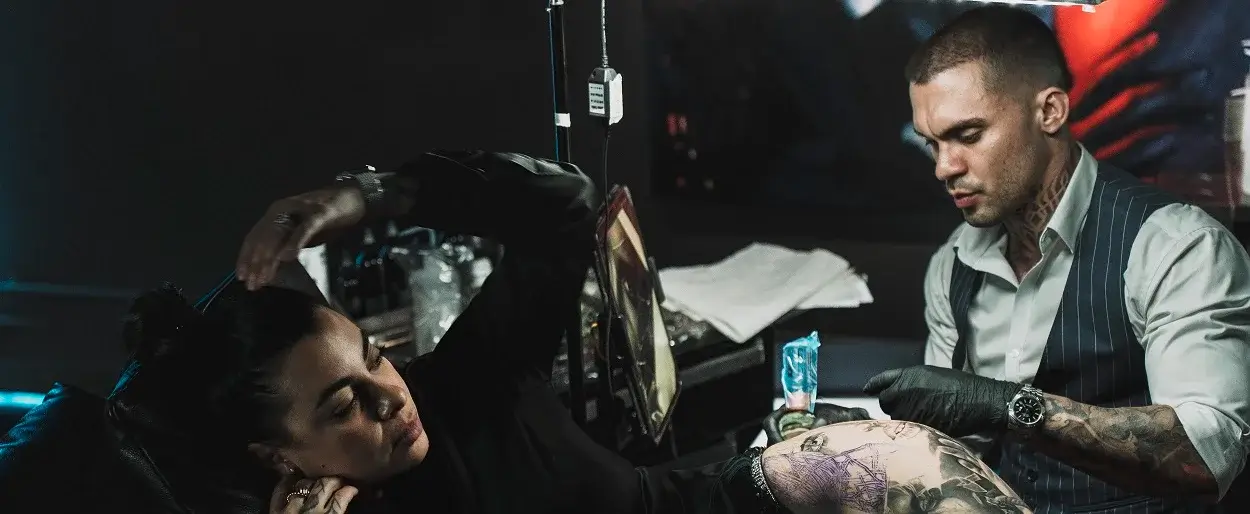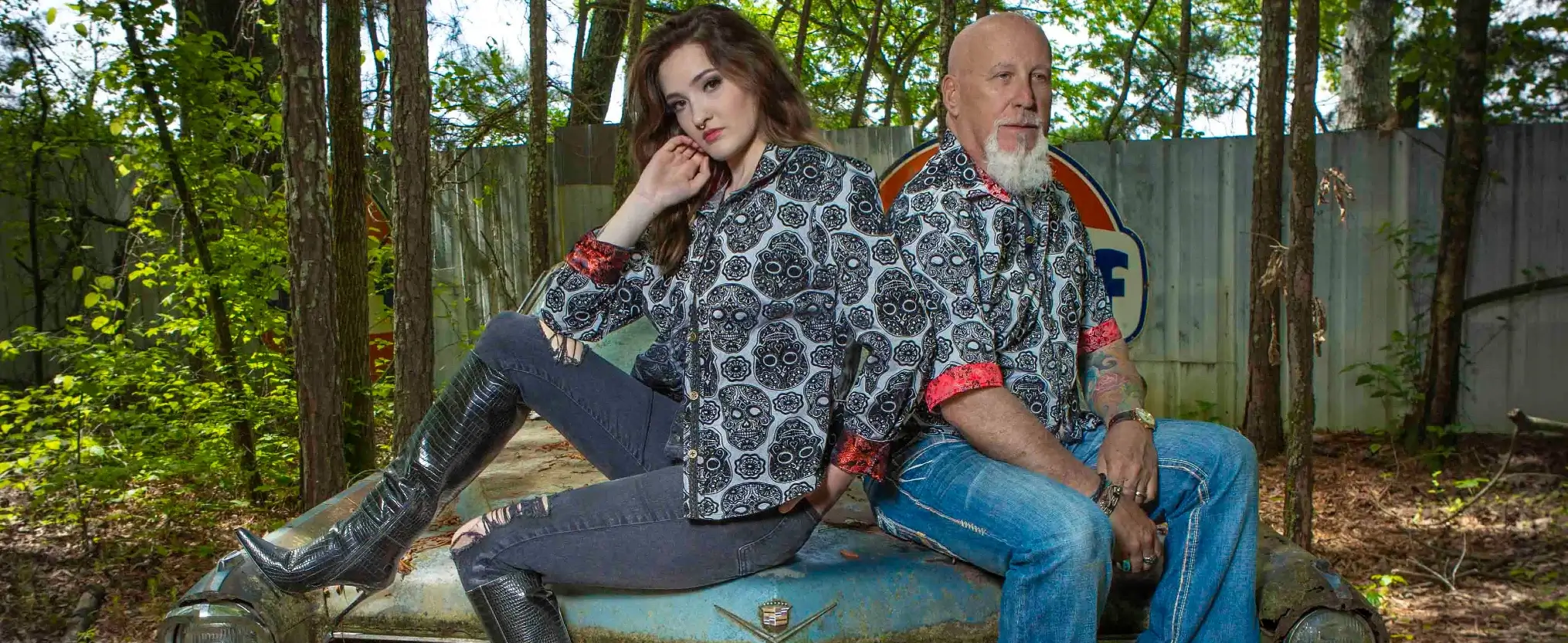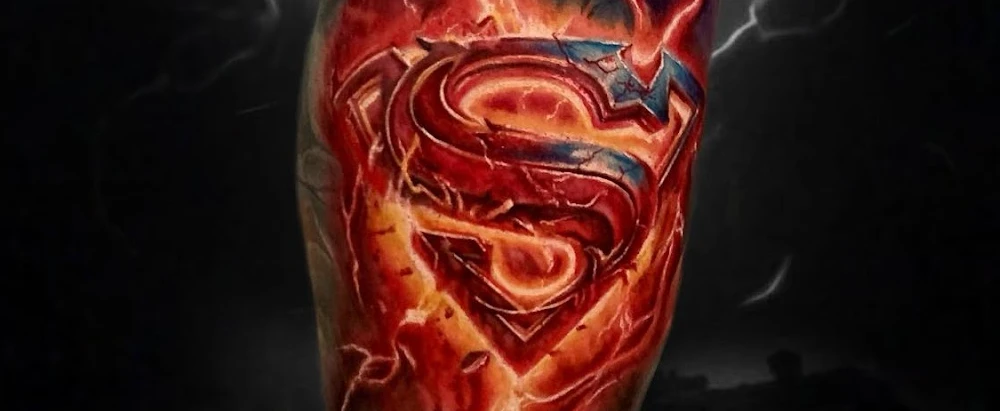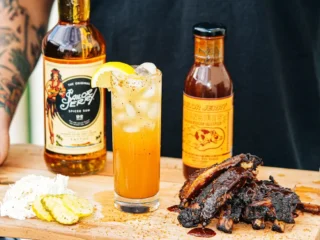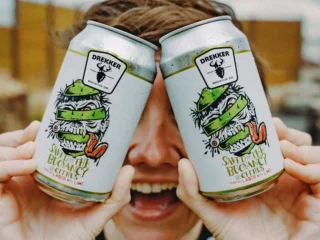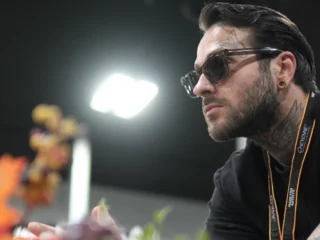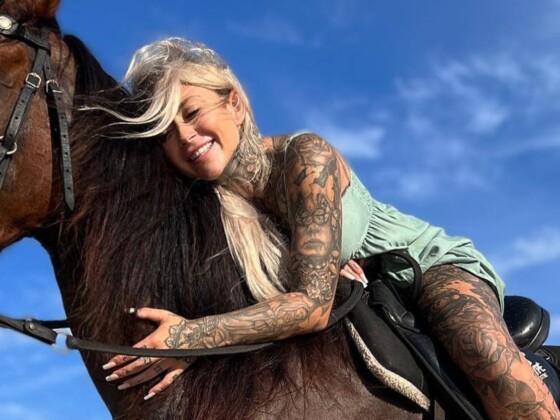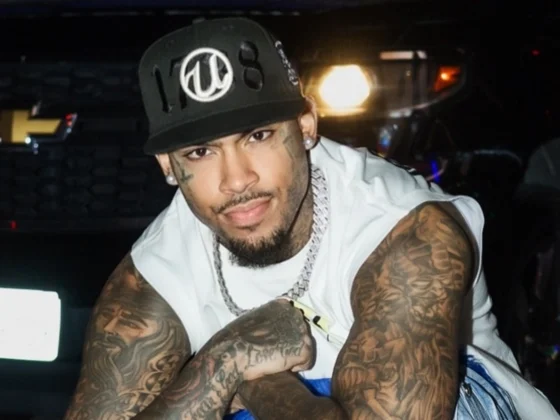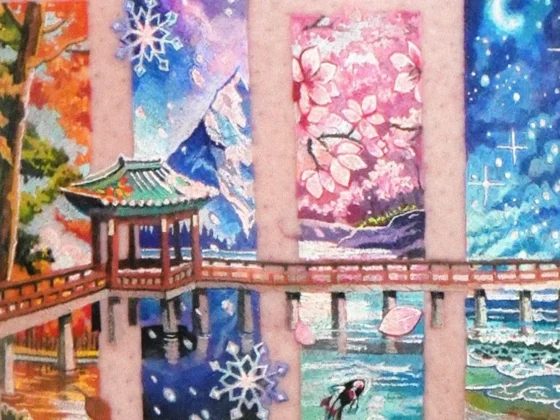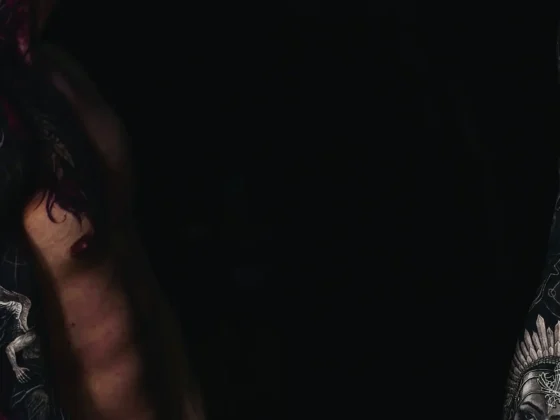Inked Mag Staff
March 10th, 2023
JK Tattoos
If you're looking for black-and-grey perfection, you've come to the right place
People often talk about how a tattoo pops off of the skin, but the real sign of a well-done tattoo is the way it blends into the natural flow of the body. This is especially true of black-and-grey realism. An expertly crafted black-and-grey tattoo looks as if it’s always been part of the person’s body, and that’s exactly how Giona’s work appears. We spoke with the talented artist about how she found her way to black-and-grey, the secret to crafting realistic portraits and more.
When did you first develop an interest in art?
I remember being interested in art since I was in elementary school, especially drawing. It was something I could spend hours on without thinking.
When did you first become interested in tattoos?
I became interested in tattoos during the last year of high school. A classmate of mine started tattooing and I thought it was cool, but I never considered the idea of becoming a tattoo artist until a couple of years later.
View this post on Instagram
How did you go about becoming a tattoo artist?
Yes, I’ve been an apprentice for more than two years. I think that being an apprentice is super important. A good apprenticeship should give you the foundation of artistic skills, hygienic standards, business management and professional ethics.
What led you to black-and-grey? Did you work in other styles first?
I started with black-and-grey because of the influence of a tattoo artist, Luigi Del Duca, who worked in the shop where I was doing my apprenticeship. I had the chance to learn from him, trying to understand and apply his techniques to my work. Another reason is because I always used to draw with pencils and that style translates to black-and-grey on skin. Before focusing on black-and-grey, I tattooed almost any kind of style.
View this post on Instagram
Have you ever considered working in color?
Black-and-grey came naturally to me. I was always drawing portraits with charcoal and pencil on paper during my apprenticeship, and that translates to black-and-grey realism on skin. I also love how the different values of grey look on skin. Once healed they look even better. I was considering doing colors for a bit, but I prefer to focus on black-and-grey until I reach a certain level of mastery and then eventually I could experiment with colors.
What are some of the key elements needed to execute a well-done portrait?
The image reference is key. Technically you have to be very soft with the shadings. A trained eye is also important. I think that before attempting to do portraits on skin one should be able to do it on paper or on canvas.
View this post on Instagram
How do you find your reference images?
I research on Pinterest or Google and look for the largest picture I can find. Then I edit the picture or I create a composition with two or more pictures, depending on the project.
What is your favorite subject matter to work with?
I love tattooing animals, sculptures and portraits. What matters most to me is having artistic freedom, no matter what the subject is.
View this post on Instagram
What are some of the unique challenges of working in micro realism?
When you work in micro realism, the reference is even more important than when you do larger tattoos. You need a very contrasted image. Another aspect is being able to work comfortably with small needles, and being super precise is a must.
Who are some of your biggest artistic influences?
My artistic influences always change. At the same time, I try to not be too much influenced by just one artist. But if I have to write down a list there will be for sure Tatu Panda, Thomas Carli Jarlier and Neon Judas. Outside of the tattoo sphere I love artists who draw with charcoal.
View this post on Instagram
Can you tell us about some of the unique challenges when working in micro realism?
When you work in micro realism, the reference is even more important than when you do larger tattoos. You need a very contrasted image. Another aspect is being able to work comfortably with small needles, and being super precise is a must.
What is it about black ink that has drawn you in? Have you ever considered working in color?
Black-and-grey came naturally to me. I was always drawing portraits with charcoal and pencil on paper during my apprenticeship, and that translates to black-and-grey realism on skin. I also love how the different values of grey look on skin. Once healed they look even better. I was considering doing colors for a bit, but I prefer to focus on black-and-grey until I reach a certain level of mastery and then eventually I could experiment with colors.
View this post on Instagram
If you weren’t tattooing, what would you like to do for a career?
I wanted to work in cinema but I also like industrial design or automobile design. Something that is art-related, for sure.
Where do you see your art going in the future?
I hope I will get to a level where everyone will know me for what I do. Then I would love to help and inspire other people to express themselves and make a living through art.
View this post on Instagram
View this post on Instagram
View this post on Instagram
View this post on Instagram
View this post on Instagram
View this post on Instagram
Editor's Picks
Bridging Classical Art and Modern Tattooing
Esteban Rodriguez brings the discipline of classical fine art to the living canvas of skin, creating hyper-realistic tattoos that merge technical mastery with emotional depth.
Show Your Ink Fashions Brings Custom Style to Tattoo Culture
Show Your Ink Fashions creates custom shirts designed to showcase your tattoos as wearable art, blending fashion with personal expression.
The Ultimate “Superman” Tattoo Roundup: Just in Time for Superman’s Return to Screens
With Superman’s big return to theaters, fans are revisiting some of the most iconic ink inspired by the Man of Steel.

